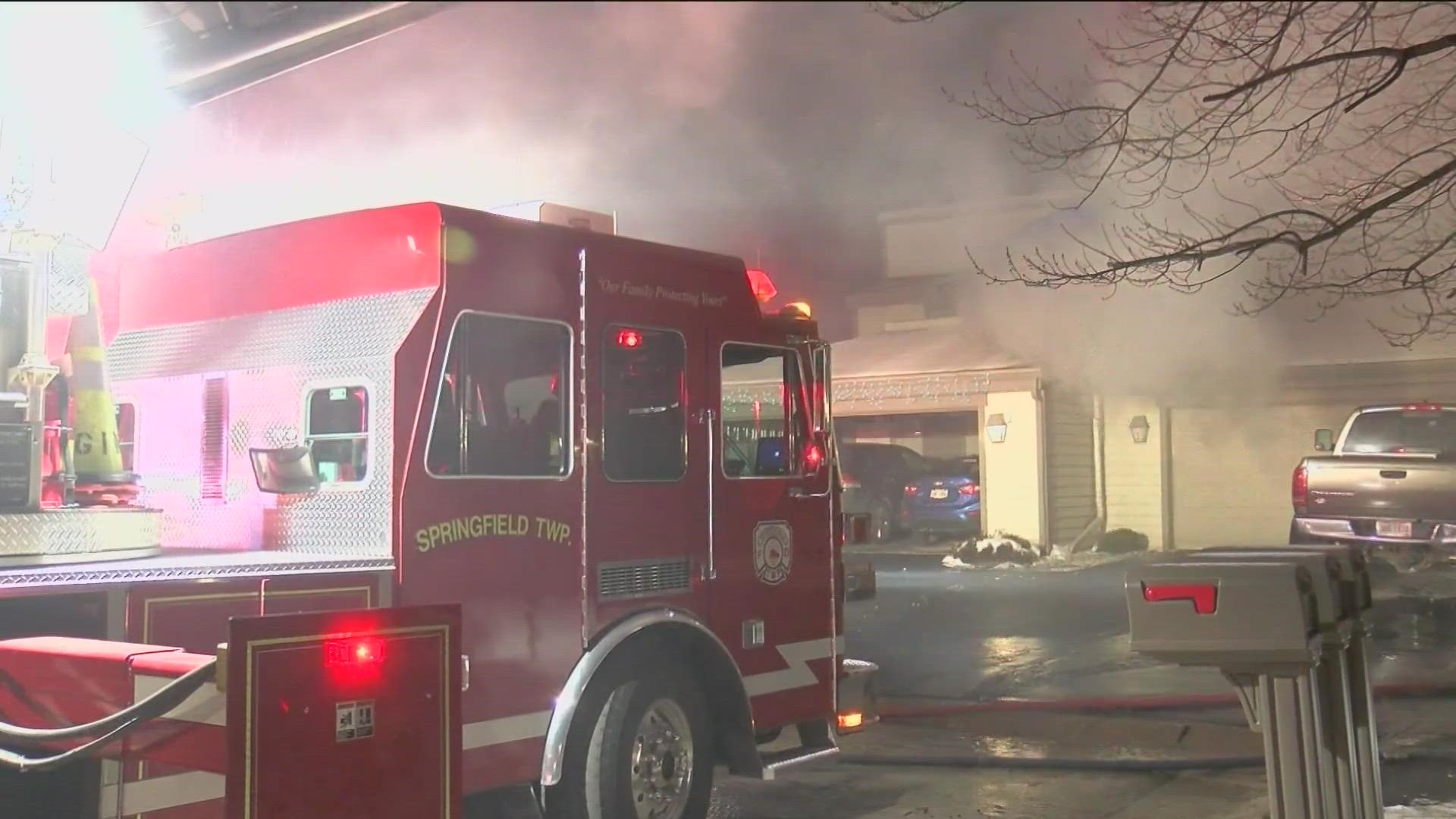SPRINGFIELD TOWNSHIP, Ohio — A family of five is safe Tuesday after an early morning fire in Springfield Township's Brandywine Country Club.
Fire officials and the family said a fireplace left on overnight caused the blaze. While a single smoke detector went off and alerted the three children and two adults inside the house, Springfield Township Fire Department leaders said this shows the importance of precautions.
By the time WTOL 11 arrived at the scene Tuesday morning, flames were ripping through the second-story roof. Responding crews tried to control the flames, but the three nearby fire hydrants on the street were frozen.
So, they had to use water from the fire truck's internal tanks while they ran to the nearest working hydrant, about 1,000 feet away, STFD Lt. Andrew Sauder said.
Fire engine tanks hold no more than 1,000 gallons of water. The hoses shoot out over 150 gallons per minute, so it was a race against time to hook up to a fire hydrant.
Eventually, the flames were beaten back and the family was safe. Sauder chalked it up to a successful response to a frantic situation.
The fire impacted more than just the family, though. Three neighbors were affected by smoke as well.
But the outcome could have been much worse if the smoke detectors weren't working. Sauder said.
"I strongly urge everyone that if you don't have a smoke detector, please go get one," he said. "If you need one here in Springfield, please call us. We can not only provide them but install them as well. And please check your batteries to make sure they're in working order."
Just like STFD, all fire departments struggle with frozen hydrants during the winter.
Toledo Fire & Rescue Pvt. Sterling Rahe said frozen hydrants mean split-second decisions for crews on the scene.
"We're talking about seconds or minutes that count," Rahe said. "If we can identify very quickly that the hydrant is frozen, the incident commander is notified of that information and we try to make decisions based on that."
Fire hoses can freeze too. But unlike hydrants, Rahe said this is much more preventable by keeping the pumps engaged and water moving out of the nozzle.
Obstacles like frozen hoses and hydrants caused by frigid temperatures can make fire responses even more difficult than they already are. But, Rahe said departments are always prepared for it.
"There's a plan B, a plan C, a Plan D, and you might be making up that plan, and you might need to make up that plan as you go, but you don't stop," he said. "Whether you're shuttling water from other engines or you're laying a longer lay with a longer supply hose, we're always going to search and find that water that's needed."

